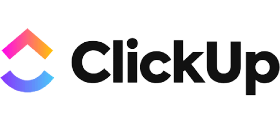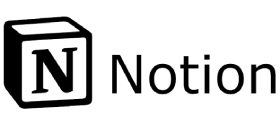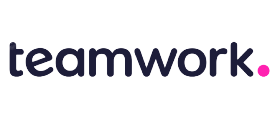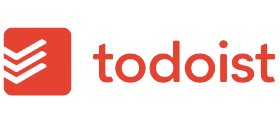Best project management software in 2024
Updated 6:58 a.m. UTC July 1, 2024
Editorial Note: Blueprint may earn a commission from affiliate partner links featured here on our site. This commission does not influence our editors' opinions or evaluations. Please view our full advertiser disclosure policy.
Managing projects effectively is a critical challenge for small business owners, who often juggle multiple tasks and limited resources. Project management tools can provide a solution by helping to set milestones, assign tasks and track progress on deliverables, all while optimizing workflows with features like artificial intelligence (AI) capabilities and ready-made project planning templates.
To help you find the best fit for your business, we conducted an extensive review of 22 project management tools, analyzing over 689 data points. We focused on functionality, value for money and support capabilities, narrowing down the options to the 10 best project management tools, along with five additional noteworthy options for specific needs. Below, we’ve summarized our findings so you can confidently choose the right project management technology for your small business.
Featured project management software offers
HubSpot

Free demo
Available
Free version available
Yes
24/7 customer support
Yes
Best software for project management
- ClickUp: Biggest time-saver.
- Monday: Best for scaling up.
- Zoho Projects: Awesome visuals.
- Smartsheet: Best for marketing and creative teams.
- Asana: Best for breaking down silos.
- Notion: Best for document sharing.
- Teamwork: Awesome customizations.
- Confluence: Amazing AI features.
- Todoist: Best for promoting focus.
- Trello: Great onboarding features.
Why trust our small business experts
Our team of experts evaluates hundreds of business products and analyzes thousands of data points to help you find the best product for your situation. We use a data-driven methodology to determine each rating. Advertisers do not influence our editorial content. You can read more about our methodology below.
- 22 companies reviewed.
- 689 data points analyzed.
- 100+ hours of research.
Best project management software comparison
| DEPENDENCIES | GANTT CHARTS | KANBAN BOARDS | TIME TRACKING | NATIVE SOFTWARE INTEGRATIONS | ||||||||
|---|---|---|---|---|---|---|---|---|---|---|---|---|
 ClickUp ClickUp | Yes | Yes, with paid plans | Yes | Yes, with paid plans | Over 1,000 | |||||||
| ||||||||||||
 Monday Monday | Yes, in Pro and Enterprise plans | Yes, in Standard, Pro and Enterprise plans | Yes | Yes, in Pro and Enterprise plans | Over 200 | |||||||
| ||||||||||||
 Zoho Projects Zoho Projects | Yes | Yes, but read-only on the free plan | Yes | Yes, with paid plans | Over 900 | |||||||
| ||||||||||||
 Smartsheet Smartsheet | Yes | Yes | Yes | Yes | Over 300 | |||||||
| ||||||||||||
 Asana Asana | Yes, with paid plans | Yes, with paid plans | Yes | Through integrations or with a top-tier plan | Over 200 | |||||||
| ||||||||||||
 Notion Notion | Yes | Yes | Yes | Through third- party templates | Over 80 | |||||||
| ||||||||||||
 Teamwork Teamwork | Yes | Yes | Yes | Yes | Over 100 | |||||||
| ||||||||||||
 Confluence Confluence | Yes | Through third-party apps | Through third-party apps | Yes | Over 1,000 | |||||||
| ||||||||||||
 Todoist Todoist | Through third-party apps | Through third-party apps | Yes | Through third-party apps | Over 90 | |||||||
| ||||||||||||
 Trello Trello | Yes | Through a power-up | Yes | Through a power-up | Over 200 | |||||||
|
Other project management software we researched
In addition to the 10 companies above that comprise our list of the best overall project management software, we also want to highlight a number of additional companies that we discovered in our research. While these products may not have as many features or have as high of user ratings, we still think they’re worth highlighting, especially for niche uses or particular user groups.
Featured project management software offers
HubSpot

Free demo
Available
Free version available
Yes
24/7 customer support
Yes
Methodology
We extensively research the key competitors within an industry to determine the best products and services for your business. Our experts identify the factors that matter most to business owners, including pricing, features and customer support, to ensure that our recommendations offer well-rounded products that will meet the needs of various small businesses.
We collect extensive data to narrow our best list to reputable, easy-to-use products with stand-out features at a reasonable price point. And we look at user reviews to ensure that business owners like you are satisfied with our top picks’ services. We use the same rubric to assess companies within a particular space so you can confidently follow our blueprint to the best project management software of 2024.
Expert score (10%): This score was calculated based on five categories: pricing, features, service and support, customer reviews and mobile app. Each category was broken down into additional factors for consideration, with each factor rated on a numerical scale.
Pricing (25%): Small business owners in particular are often worried about cutting costs, making the price of a project management software a critical point. Our researchers checked the availability of transparent pricing information for each tool and checked if there was a free trial available. The pricing score was also based on the actual prices (as available), considering both the starting price tier and the highest price tier. The lower the price, the better the score.
Features (32%): Our researchers assessed part of the features score based on general features, including role assignment, timelines, Gantt charts, software integrations, dependencies and budgeting. These are the essential characteristics that business owners will likely need in a project management tool. The remainder of the features score was based on characteristics that are a “nice to have” but not a must, including customizable templates, milestone tracking, expense tracking, Kanban boards, billing, invoicing and guest/client access.
Service and support (8%): If technical difficulties arise with a project tool, business owners need accessible customer support. Our researchers assessed each project management tool according to the availability of two things: an online knowledge base and live chat. If the live chat was with a human operator, the score awarded was higher than if it was with a bot.
Customer reviews (15%): While online reviews can provide insights into an app’s features, pricing, and support availability, they can’t provide impressions of a real-world user’s experience. Online rating sites compile feedback from hundreds, sometimes thousands, of users, giving tangible insights into the pros and cons of actually using these tools. Our researchers looked at customer reviews and overall ratings on Trustpilot, G2 and Capterra.
Mobile app (10%): Business owners may want to check in on projects on the go, making a mobile app a useful add-on. Our researchers considered the availability of an app for iOS and/or Android for each project management tool. Availability of an app made up half the mobile app score. The other half was based on average reviews in the Apple and Google Play stores.
What is project management software, and how does it work?
Project management software is a technology that enables team collaboration, streamlines organization and helps businesses meet their goals. The best project management software platforms have dramatically evolved, especially in the last decade, and the capabilities seem almost endless.
Project management software can be used by very small teams and huge enterprises alike to help manage projects, track assignments, delegate tasks, schedule key checkpoints and due dates and collaborate on documents and other tasks.
These platforms typically come in desktop versions as well as mobile apps and offer users a range of different view styles and options for organizing all the parts of a project. They have tools that can help teams stay aligned within themselves as well as with other teams and departments.
Project management software technology continues to grow ever more sophisticated, with many companies now introducing AI features and tools and offering more integrations than ever with other apps and software. Having all of this in one, centralized location keeps teams connected while ensuring that nothing gets lost in the fray.
Benefits of project management software
“Project management” once involved manually tracking tasks and items on Excel sheets, constant email check-ins and interminable status update meetings with your team regarding their tasks and assignments.
With the best project management software, you can cut out the extra nonsense that sucks up time in a workday, and your team can get back to doing what they do best — their jobs.
The benefits of using project management software include:
- Get organized: Nothing slows down operations quite like having to dig for information, ask people where things are or not have the tools you need where you can access them with ease. Project management software, first and foremost, organizes your workflow and resources so that things are exactly where they should be when you need them.
- Improve efficiency: Gone are the days of having to painstakingly email documents or sheets back and forth or having to manually track tasks. With tools like Kanban boards, you can easily visualize and move tasks along their workflow and all team members can see this happen and be notified when they are up next on an item.
- Encourage collaboration: Great project management software allows your team to get a more holistic view of what you’re working on. It helps people feel less siloed in their own tasks and see the big picture. With collaboration tools, teams can meet, chat, draw ideas, take notes and visualize projects as a cohesive unit rather than disparate parts.
- Clarify goals: Clear criteria and metrics are essential for achieving goals, and when these are transparent for the whole team, it makes it much easier to actually achieve what you are setting out to do. Project management software helps you set up checkpoints and other measurements that can help your team stay on track.
- Resolve issues and roadblocks: Project management software makes it easier to stay on top of issues. If one aspect of a project gets delayed or has another problem, the team will be able to see this and work around it. Other tasks will be able to continue moving without everything screeching to a halt.
- Manage costs: Tools like time tracking, invoicing and other cost management tools are available from many software providers. Being able to easily track budget goals and outcomes is crucial to the success of a project or business at large, and many good project management software can now integrate with your accounting software as well, simplifying how you manage your money.
- Better utilize resources: Project management software can help teams better balance workloads and tasks. If a manager notices that one team member is particularly overwhelmed with tasks while another is in a lighter phase, they can rebalance the workload so no one gets burned out.
- Streamline reporting: The reporting tools available from many project management software providers are more sophisticated now than ever and can provide insight at the start, during and in retrospect of a project. You can see timelines, how tasks were distributed and where and when roadblocks occurred. This type of learning and insight is invaluable for future projects.
Expert Insight
“I’ve worked with many companies that use project management software and many that don’t. The difference is night and day. It’s incredibly convenient for team members to log in and see all their tasks at a glance. No one has to go hunting through email threads for the information they need to get a job done.
Everyone involved with a task is also updated when progress is made, and the baton is passed. Plus, if anyone has a question, note or update about a particular task, they can add it under the task so it doesn’t get lost.
Overall, the tools save time, improve transparency, and reduce the likelihood of errors. As a result, they can give your business a competitive edge and make you more enjoyable to work with.”
– Jessica Walrack, Project Management Advisor
Who needs project management software?
Small business owners may want a project management software to help keep deliverables on track. With these tools, you can set deadlines, break goals down into tasks/subtasks and assign duties to specified team members. Some project management software also allows for visual representation of project progress, for example through Gantt charts or Kanban boards. These features help teams stay aligned and on track toward deliverables.
Some entrepreneurs may also want a project management tool for external, client-facing purposes. For example, you can invite clients to track a project’s progress through the tool, rather than having to send them repeated update emails.
Real-world use case
“Project management software can also be helpful for solopreneurs and freelancers who want help tracking their workload. For example, I’m a service provider who works with about ten clients at a time and is typically responsible for anywhere from one to eight tasks per client per month. Every task has a unique set of requirements, a deadline, supporting resources and a status. Keeping all that information straight is difficult and stress-inducing without a system.
While several of my clients have project management systems they ask me to use, having my own allows me to keep all my tasks in one organized place. I don’t have to worry about remembering where everything is because I know it’s all there. As a result, I have more time and mental bandwidth to focus on other things like demand gen and the work itself. ”
– Jessica Walrack, Project Management Advisor
How to choose the best project management software
With so many project management platforms to choose from, there’s no reason to make a hasty decision. The best software for project management should fit your budget while balancing the needs of your staff and leaders. Follow these steps to find the right solution for your company.
1. Consider your company’s workflows and needs
While new software means change, your team shouldn’t have to alter entire routines. Instead, look for tools that fit into your current processes. Even better, find a platform that streamlines it. Start by considering your current challenges and applications.
Think about these questions:
- Do your employees use multiple platforms when working on projects and could project management software unify tasks?
- How do your project managers convey deadlines and manage status updates, and is it effective?
- Do you have a way to view reports and analytics on your project budget, resource usage or workloads?
- What issues cause your team to underperform, and how could project management software make a difference?
- Do you need more built-in efficiency-tracking tools for product development projects?
2. Identify your must-have features
Even among the best project management software, features vary extensively. There’s no point in paying for expensive tools your team doesn’t need. Determine which staff will use the system, including administrators, clients, leaders, stakeholders, technical and nontechnical employees. Then, survey each category to learn and prioritize needed features and capabilities.
Some must-have features of project management software include:
- Kanban boards: This is a way to visualize progress using vertical columns that team members can move tasks across. It helps with tracking the stages of a task or project pipeline and is a great way to see all in-progress tasks at once and get a sense of the big picture.
- Gantt charts: These horizontal bar charts are used to help visualize a project’s timeline with all its parts. These are great tools when different teams or departments need to be involved with something big, like launching a new product.
- Dependencies: Creating dependencies is another way to help automate tasks and keep things humming. When you create dependencies, a change in status on one item or task can then update or impact others. They can become intricate, but once you have them set up in your system, it’ll ease a lot of legwork.
- Task management tools: Teams need to be able to stay on track. Task management tools like individual tasks, action items, assignments, due dates and comments are all key to keeping tasks moving through the workflow.
- Collaboration tools: Tools and features like messaging, annotations, public views, brainstorming whiteboards, guest visibility and strategy maps will help keep teams creative and excited about their work.
- Time-tracking: Some systems have built-in time-tracking tools and others require the use of a third-party app. Keeping accurate track of time will help you manage productivity and identify issues.
- Integrations: If you are using other software or products, you’ll want these to be able to integrate with your project management system. Integrations can include everything from CRM to POS, so if you are leveraging other products in your business, be sure to research how these might be used with your project management software of choice.
3. Compare project management platforms
Start with an open mind and a wide net by reviewing guides (like this one). Check out reviews from business users and, when possible, look for individuals in your industry who are using project management software. Visit user review sites and filter reviews by company size or sector. Go through App Store ratings to see what users say about mobile usage and request recommendations from your professional network.
4. Complete free trials and ask teams for feedback
After narrowing your list, choose a handful of project management platforms and request free trials.
Consider using the following process:
- Give each department ample time to test features with a sample project.
- Use a feedback form to gather team opinions and suggestions.
- Bring everyone together to discuss various platforms.
- Choose the best project management software for your business.
- Roll the platform out among only your management team.
- Use your management team to champion the software’s rollout for their respective teams.
“Effective project management software can be a game-changer for a small business. You will want to prioritize tools with strong task management and collaboration features. These features help keep your team organized and projects on track. Also make sure that the software offers easy integration with other tools you use, which will help streamline workflows, making your team more productive and your projects more successful.”
– Bryce Colburn, Lead Editor
How much does project management software cost?
| FREE TRIAL LENGTH | LOWEST PUBLISHED PAID PLAN PRICE PER USER (MONTHLY BILLING) | HIGHEST PUBLISHED PLAN PRICE PER USER (MONTHLY BILLING) | FREE VERSION | |
|---|---|---|---|---|
ClickUp
| Variable
| $10
| $19
| Yes
|
Monday
| 14 days, for Pro plan only
| $12*
| $24*
| Yes
|
Zoho Projects
| 10 days
| $5
| $10
| Yes
|
Smartsheet
| 30 days
| $9
| $32
| Yes
|
Asana
| 30 days
| $13.49
| $30.49
| Yes
|
Notion
| Business and Enterprise plans can request a trial
| $10
| $18
| Yes
|
Teamwork
| 30 days
| $13.99**
| $25.99**
| Yes
|
Confluence
| 7 days
| $6.05
| $11.55
| Yes
|
Todoist
| No
| $5 (not per user)
| $8
| Yes
|
Trello
| 14 days
| $6
| $17.50 (only billed annually)
| Yes
|
Jira
| 7 days
| $8.15
| $16.00
| Yes
|
Wrike
| 14 days
| $9.80
| $24.80
| Yes
|
Coda
| No
| $12
| $36
| Yes
|
SharePoint
| No
| $5 (annual billing only)
| $12.50 (annual billing only)
| No
|
Airtable
| No
| $24
| $54
| Yes
|
*Monday.com pricing varies by volume. Rates shown are for per-user costs for three licenses, the minimum number of licenses you can purchase.
**Teamwork requires a three-user minimum for Deliver plans ($13.99 per month, times three) and a five-user minimum for Grow plans ($25.99 per month, times five).
Most project management software providers will offer a few different plan types and billing options. All of the providers on our list except for SharePoint also offer a free version, though these are often extremely limited in features and capabilities, they should be able to give you a sense of what the platform looks like and how it works.
The providers on this list typically offer monthly billing options. You can pay month-to-month or monthly with an annual commitment. For example, ClickUp offers four plan options: Free, Unlimited, Business and Enterprise. Free, of course, has no fee, and the highest tier, Enterprise, requires a custom quote. Most SMBs will be adequately served by one of the middle-tier plans.
Project management software also typically bills per user. Some set this as a flat rate, and some scale their pricing with the number of users you have. In either case, opting for an annual billing cycle will almost always result in a lower monthly rate than if you pay month-to-month. If you are uncertain about a provider, however, and don’t want to commit to a year up-front, month-to-month billing can be a great option while you test the software.
Pay close attention to the differences between plan tiers when you are researching providers – there can be a significant cost jump between plan tiers, and there can be differences that are easier to miss. For example, if you have a team of 27 people, you may just miss a 25-user cut-off for a lower-tier plan and be forced to upgrade, even if you don’t necessarily want or need the other features.
Expert Insight
“It can be hard to compare project management pricing plans apples to apples because the offerings often aren’t directly comparable. While there are some similarities, each company has a unique lineup of features, unique terms for features and a unique way of organizing its pricing tiers.
A good place to start is figuring out the features and number of users/seats you’ll need. From there, you can shop around and get quotes on plans that suit your needs.
For example, suppose you have a team of 10 people and need up to 5GB of storage, 20 integrations, Gantt views and guest access. With that information, you could shop around and get quotes on plans with at least those features, such as:
- ClickUp’s Unlimited plan would work and comes with a cost of $100 per month or $840 per year.
- Monday.com’s Standard plan also ticks those boxes but would be $140 per month or $1,440 per year.
With a handful of quotes on plans that meet your minimum needs, you can then compare the offerings side-by-side based on the cost and other factors like additional features, the user interface and customer support.”
– Jessica Walrack, Project Management Advisor
What we don’t recommend
When selecting a project management tool, the key is to consider what features you need versus what features you don’t need. You don’t want to fall into the trap of paying for all kinds of cutting-edge features that you won’t actually use. For example, if you’re a solopreneur who sells products and doesn’t bill by the hour, time-tracking tools probably aren’t worth your money.
In general, read the fine print on the pricing and check what features are included with what plan. Just because a tool advertises some cool AI features on its homepage doesn’t mean you actually get that feature with every plan. Often, the more advanced capabilities are only available with higher-tier plans.
Finally, beware of customer service guarantees. We’ve seen providers guarantee 24/7 service without specifying that service is only through a bot. Again, it’s all about reading the fine print and figuring out exactly what you’re getting when you pay.
Featured project management software offers
HubSpot

Free demo
Available
Free version available
Yes
24/7 customer support
Yes
Frequently asked questions (FAQs)
Project management software is an application businesses use to plan and track internal or external projects. Likewise, leaders leverage project management tools for managing operations, portfolios or resources. Many departments rely on project management systems, including software development, design, marketing and engineering teams.
ClickUp provides the most tools for managing projects, resources and portfolios. It earned a five-star rating in our guide of the best project management software, with more overall features and better scores than other applications we reviewed.
ClickUp earns a perfect 5.0 stars and is the software that will save you the most time. Its suite of features is vast, and even its free version offers features galore, including 24/7 customer support, whiteboards, sprint management and unlimited members and tasks.
For paying users, the options are limitless. More than 15 types of views, extensive customization options, creative collaboration tools like a visual canvas and real-time reporting all combine to make a powerful software that looks great and is reasonably priced.
Our top-rated companies, ClickUp and Monday.com, both offer easy-to-use interfaces, but ease is ultimately subjective. The longer and more complicated answer is that project management software has come leaps and bounds over time, especially in the last decade or so, and it is more intuitive and user-friendly than ever.
The majority of the companies on our list have made great efforts to continue honing and refining their offerings so that businesses can leap straight into the product and get to work with minimal training or headaches. There will always be some kind of learning curve with new software, but you’ll find that most of the top providers are pretty comparable.
Yes. That isn’t to say that free plans or tools don’t have a lot to offer, but when it comes down to it, you are more likely than not to run into a limitation that will require paying for an upgrade.
In some cases, a free tool may be enough. The average freelancer or solopreneur isn’t likely to need Enterprise-level security features or advanced automations. In fact, if you’re looking for a simple board or space to keep track of your tasks or works in progress, a free tool may be perfectly sufficient. Even small teams may be able to get by just fine with free tools.
If you plan to scale, however, or your team starts to grow, you’ll likely face issues with limited tools. For example, storage space is typically very restricted with free tools, as are user limits, customizations, access to AI tools, sharing functions and reporting tools. To really be able to utilize the full power of project management software, you’ll need to pay.
There are a lot of ways to improve the project management process and make work smoother for everyone on your team, including:
- Asking for feedback: Great leaders and managers don’t operate in an isolated bubble — they talk to their people. They take stock of what is and isn’t working so that they can amplify success and clear roadblocks. The team that’s keeping the day-to-day tasks running is one that can provide you with important insight into your processes, and this feedback is invaluable. Don’t overlook it. Surveys, conversations and other types of feedback requests are all ways to help you improve the process.
- Communicating effectively: Interminable email chains are headaches for everybody. There are all kinds of tools that can help teams communicate more efficiently, whether it’s video chat, whiteboard brainstorming sessions or using the commenting function for tasks in your project management platform.
- Trying different project management methods: There are many different project management methods and methodologies. Some of the most common and popular include agile, lean, scrum, critical path, dynamic systems and adaptive framework. No one method is better than another necessarily, but you may find that the tenets of a particular methodology really suit your team. Whether you adhere to one of these methods or not, knowing the foundations of a few different ones can help you leverage the aspects that fit your work best.
- Set achievable expectations: No one can work efficiently or effectively if they are overworked, and too many businesses have met trouble when trying to scale too rapidly. Balancing workloads and setting reasonable, attainable goals will help keep teams from burning out while also keeping them feeling excited about meeting goalposts.
- Utilize project management software: The best project management software or task management software can give you and your team invaluable tools to undergird success. These platforms give your teams a powerful, unified space for collaboration and visualization. They offer leaders and managers insight into performance and efficiency and they ensure that everyone knows exactly what needs to get done and when.
Project planning is critical and prevents chaos down the line. Taking the time to create a plan, assess resources, anticipate challenges and set goals will help your team kick off a project with confidence and carry it through to completion with a clear sense of what’s required each step of the way. Of course, unanticipated issues may arise, but these will be much easier to deal with in the context of your larger plan than they would be without one.
The core components of an effective project plan are:
- Clear goals and objectives: It’s a surprisingly common misstep for businesses or teams to enter into a project without a clear sense of what the overarching goal or objective is. This is a foundational piece that will drive everything that follows. Teams need to understand why they are doing what they’re doing and what the desired outcome is. This also means that you’ll be able to more accurately measure success and reward it.
- Resource planning: Unfortunately, most projects don’t start with blank checks. You will likely have a budget you will need to stick to, and the more advanced planning you can do about how you will allocate your resources, the better.
- Roles and responsibilities: It’s crucial that your team members understand their roles and responsibilities clearly. Blurring lines in this area can lead to frustration and resentment if people feel like they are being asked to work outside the scope of their job or expertise. Clear-cut boundaries from the outset will keep everyone on track, knowing exactly what they are responsible for and what goals they need to meet.
- Timeline: You may not be able to predict exactly from the outset how much time each part of your project will take, but having at least a rough sketch will help you continue to visualize a clearer overview of the scope of the work. Of course, unexpected roadblocks can arise in any project and create delays, but if you have a map from the start, it is much easier to reconfigure other components to accommodate timeline fluctuations.
Some project management software providers even provide project plan templates and ideas in their platforms, making it easier than ever to put a plan in place and hit the ground running.
Blueprint is an independent publisher and comparison service, not an investment advisor. The information provided is for educational purposes only and we encourage you to seek personalized advice from qualified professionals regarding specific financial decisions. Past performance is not indicative of future results.
Blueprint has an advertiser disclosure policy. The opinions, analyses, reviews or recommendations expressed in this article are those of the Blueprint editorial staff alone. Blueprint adheres to strict editorial integrity standards. The information is accurate as of the publish date, but always check the provider’s website for the most current information.
-

Best Gantt chart software in 2024
Project management Mehdi Punjwani
-

Best free task management software in 2024
Project management Mehdi Punjwani
-

Trello vs. Monday: Differences, pros and cons in 2024
Project management Cat McAlpine
-

Notion vs. Asana: Differences, pros and cons in 2024
Project management Deirdre Mundorf
-

Asana vs. Jira: Differences, pros and cons in 2024
Project management Dennis O'Reilly
-

Best ClickUp alternatives in 2024
Project management Jackie Lam
-

Best Monday.com alternatives in 2024
Project management Dawn Allcot
-

Monday vs. ClickUp: Differences, pros and cons in 2024
Project management Kerri Hale
-

Asana vs. ClickUp: Differences, pros and cons in 2024
Project management Taylor Sansano
-

9 best Smartsheet alternatives in 2024
Project management Brynne Conroy
-

Asana vs. Trello: Differences, pros and cons in 2024
Project management Bryce Colburn
-

5 best Trello alternatives in 2024
Project management Kathy Adams
-

5 best Notion alternatives in 2024
Project management Sarah Li Cain
-

Asana vs. Monday: Differences, pros and cons in 2024
Project management Eric Rosenberg
-

5 best Jira alternatives in 2024
Project management Laura Gariepy


















